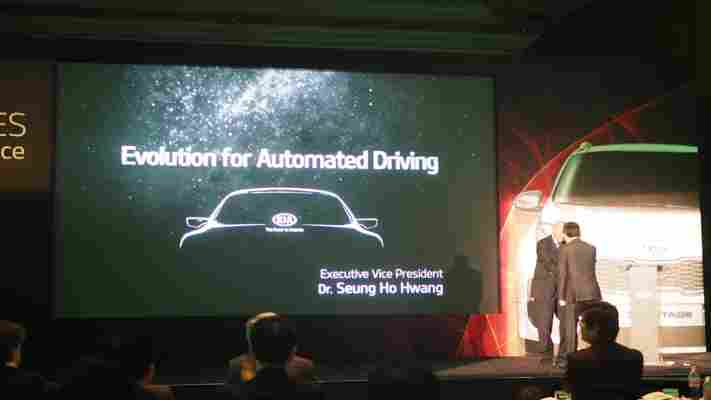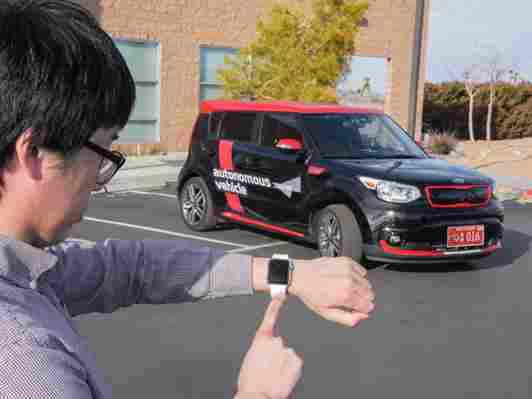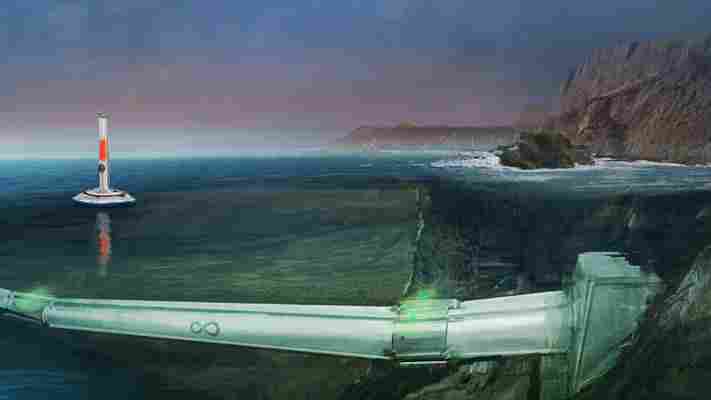Sony’s new universal remote packs a low-power e-ink display
After a successful campaign on Sony’s own First Flight crowdfunding platform , the company’s Huis remote controller features an e-ink screen that displays only the buttons you need to operate your TV, audio system, lighting and air conditioners.

The Huis (pronounced “house”) offers some notable advantages over traditional universal remotes that feature LCD displays and buttons. The e-ink display can stay on all day without consuming power and the company says it will last a month on a single charge.
You can customize the button layout for each device so you only see control for the functions you use most. The remote lets you set it up on the device itself or by using a desktop companion app that also supports sharing and downloading additional configurations on the Web.
Sony has been working with e-ink for some time now. In 2014, it debuted a fitness tracker with a low-power display that extended battery life to three days. The company also crowdfunded an e-ink watch on its platform last year.
The Huis controller retails for 27,950 Yen ($245) and will begin shipping in March in Japan. Sony hasn’t said if if the device will become available internationally.
➤ Huis Remote Controller [via The Verge ]
Kia promises self-driving cars will be available by 2030
Another day, another company getting into the autonomous driving game. This time around it’s Kia , and it’s making a bold claim: 100 percent automated vehicles in its fleet by 2030.

The cars will be powered by a new feature the company is calling ‘Drive Wise,’ replacing the company’s current ADAS (advanced driver assistance system) platform.
These vehicles will theoretically not need any user assistance whatsoever, and should be able to drive even without a user inside it. You would be able to ‘loan’ a vehicle to a family member by sending it to their address with a smartphone app, for instance.


In the meantime, the company says we should expect partially autonomous vehicles to begin implementing the the Drive Wise brand by 2020 – a test model based on a Kia Soul has already been approved for public roads in Nevada. These cars will tout features such as autonomous parking or advanced cruise-control on highways – a la Tesla – to help you relax a bit on those longer trips.
The company says that by 2030 “drivers will be free of the burden of driving.” Not a phrase you typically expect to hear from a car manufacturer, but perhaps appropriate for its first-ever appearance at CES.
➤ Kia Motors introduces new Drive Wise sub-brand for autonomous driving technologies [Kia]
Hyperloop One wants to build super-fast, on-demand underwater transport systems
Hyperloop One made the news last month when it launched an open-air propulsion test of its next-gen transport technology, sending: a metal sled tearing through the desert on railway tracks at 115mph in 2 seconds .

The company, which, like several others, is working to develop a high-speed mass transport system based on a concept proposed by Tesla and SpaceX CEO Elon Musk.
As it gets closer to its goal of bringing the idea into reality, its journey is becoming more fascinating by the day to learn about. Hyperloop One CTO Brogan BamBrogan some interesting insights into his company’s progress in an interview on the Science Friday public radio show.
BamBrogan opened by reiterating that the company isn’t inventing anything new: Hyperloop can be built right now, but it’d be way too expensive to set up for public use at this point. However, innovation is necessary to bring costs down so the system can be manufactured and deployed widely.
BamBrogan added that this rapid transport technology could unlock many more doors than just shuttling people between cities:
He also explained that safety is the biggest benefit of the Hyperloop concept, as it’s immune to problems encountered in traditional methods of transport, like at-grade intersections (like street traffic) and difficult weather conditions.
Credit: Hyperloop One
And when asked whether Hyperloop will be built like long trains or small buses, BamBrogan noted that it’ll be more like an on-demand system that transports people without interruption:
Given how basic the first public test was, it’s clear that companies like Hyperloop One still have a lot of work to do. But it’s fascinating to think how we’re fairly close to seeing an entirely new mode of transportation in our lifetimes, and it’s equally amazing to follow the developments up close.
